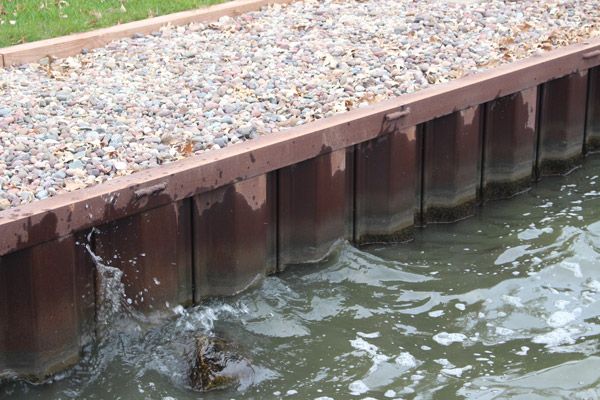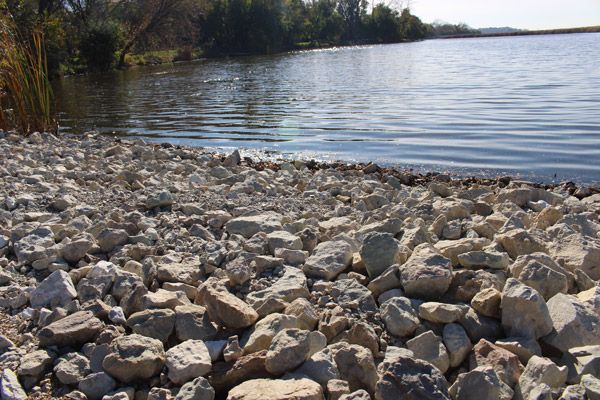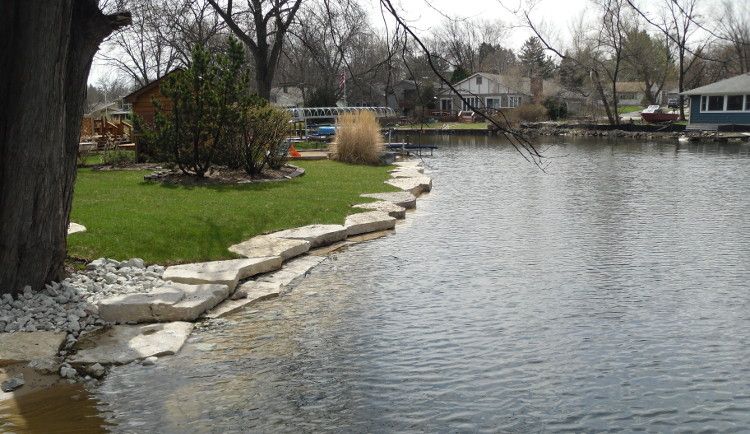Use this Seawall Design Checklist to Make a Smart Choice
There are many types of seawall designs out there. But choosing the one right for your shoreline can be challenging. After all, do you go for a simple and practical steel seawall? Or perhaps you should choose some eco-friendly rip rap?
Each seawall design has its own set of benefits and drawbacks. Therefore, there are many factors to consider before making your decision. These include cost, aesthetics, shoreline conditions, and more. But if you’re new to the world of seawalls, you might not know how to navigate this unfamiliar market.
Luckily, Seawalls Unlimited is here to help!
If you’re looking for a seawall, but aren’t sure how to choose a design, don’t worry! Here’s a checklist of questions to help you decide.

1. What is Your Body of Water Like?
First, when choosing a seawall design, consider the body of water it will border. Factors like size, depth, salinity, and currents all play a major role in seawall construction.
For example, the smaller and calmer the water, the less demand will be placed on the seawall.
So, if your property borders a small pond or a calm stretch of lake, you can use rip rap with stones as small as 3 to 6 inches. But if you border a river or an inland lake, you might want larger 6 to 12 inch stones. Likewise, sturdier structures like outcropping or steel lend themselves to rougher waters.
Also, you should consider the salinity. For example, if your property borders saltwater, you might avoid a steel seawall, since these are best suited to freshwater.
2. How Busy and Sturdy is Your Shoreline?
Next, consider the conditions of the shoreline. Think about the slope of the shore and how much human activity it withstands.
For example, does the water see a lot of boat wake? Frequent boat traffic at high speeds can create large wakes that might erode your shoreline over time. No-wake zones are safe for using small-stone rip rap. But areas with excessive wake might require a sturdier seawall design. In these cases, consider outcropping or a steel seawall—the strongest options.
Also, think about the shoreline itself. Is the soil sandy, or does it contain mostly silt and clay? Perhaps it inclines steeply, or maybe more gradually?
Learn about the installation processes for each seawall design to decide which would work for your shoreline. Steel seawalls can penetrate any kind of soil. So, if you’re unsure about the stability of your shoreline, steel might be the safest choice.
But that’s not to say you can’t use other designs for shorelines with rough conditions.
In fact, for areas with currents strong enough to be dangerous, rip rap creates a barrier between land and water. This safeguard also discourages people from wandering too close to potentially dangerous water. In addition, rip rap prevents soil erosion and can even restore banks in problem areas. So, it’s still worth looking into if you think conditions are suitable.

3. Which Seawall Design is Best for the Environment?
Next, consider how important it is that your seawall design is environmentally friendly.
Rip rip rap is the “greenest” seawall design by far. Unlike other types of seawall design, rip rap doesn’t block organisms from moving in and out of the water. So, it causes the least harm to animals in your area. Rip rap can even be colonized by native plant species and some insect species.
Additionally, rip rap provides the most organic aesthetic. In fact, regrown native plants and other vegetation can partially hide the rip rap. The stone used also appears natural and more rough-hewn. So, it’s the best option for blending into the shoreline.
On the other hand, outcropping offers a more stylized look. But it can be just as beautiful. The irregular shapes and sizes of the stone allow many design possibilities, depending on the vibe you’re going for.
4. What Does Each Option Cost?
Finally, you must consider the expense of the different types of seawall design.
Weigh the costs of installation against long-term ownership. In the short-term, rip rap is typically the cheapest because of its simplicity. But steel seawalls have the longest lifespan of any seawall design. So, choosing steel might save you money if you plan on holding onto the property for a long time.
However, the cost of each seawall type depends on your shoreline as well. Different shoreline conditions such as soil type, incline, and currents affect the kind of seawall you can install.

Still Stumped? Give Us a Call!
If you’ve still got questions, call us at (815) 331-8830. With 40 years of experience installing, maintaining, and repairing all types of seawalls in McHenry, IL, we’ve seen it all. We’ll be happy to go over each option with you.
Editor’s note: This blog was originally published on February 6, 2019 and was updated on July 12, 2019.

